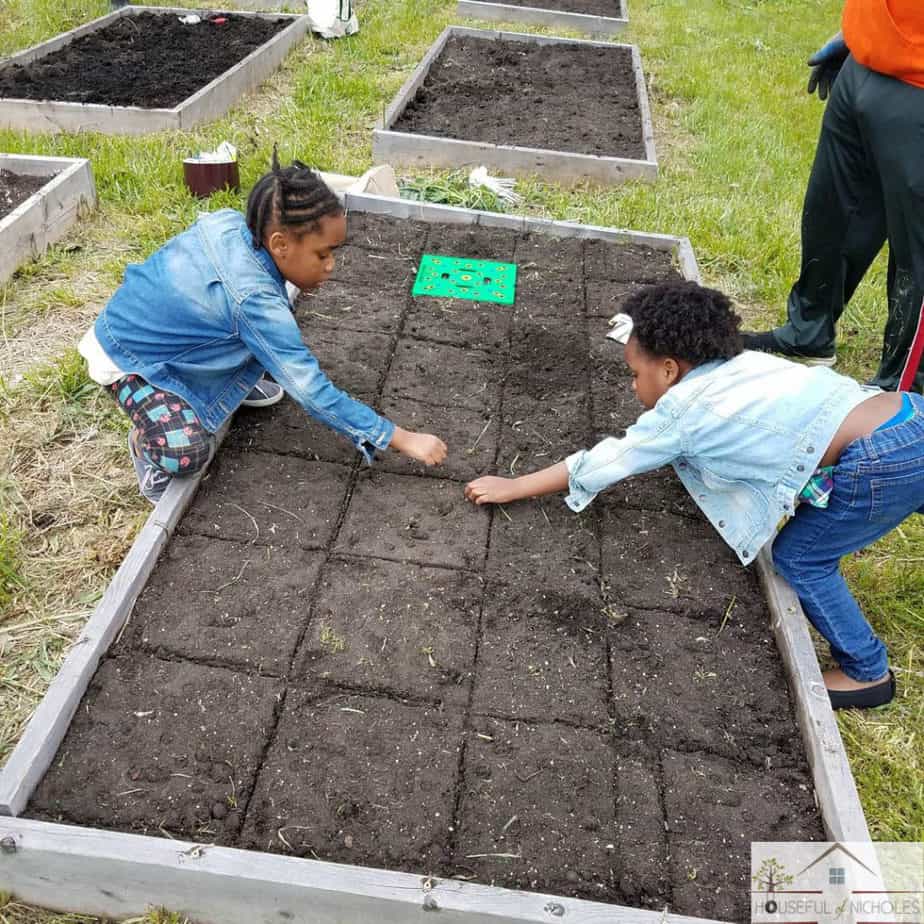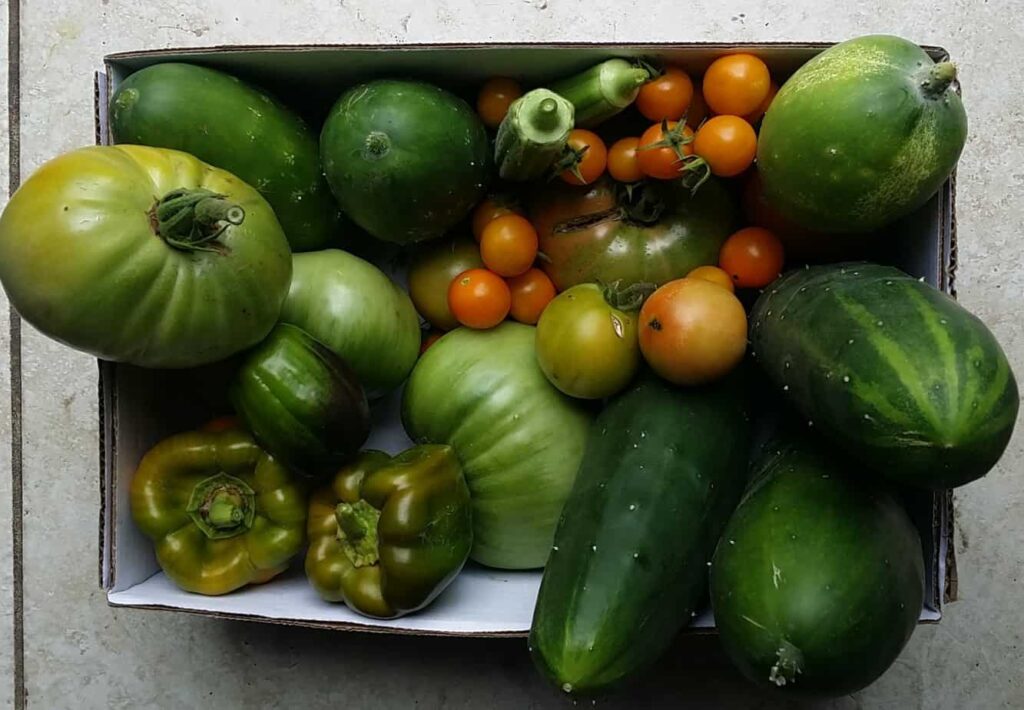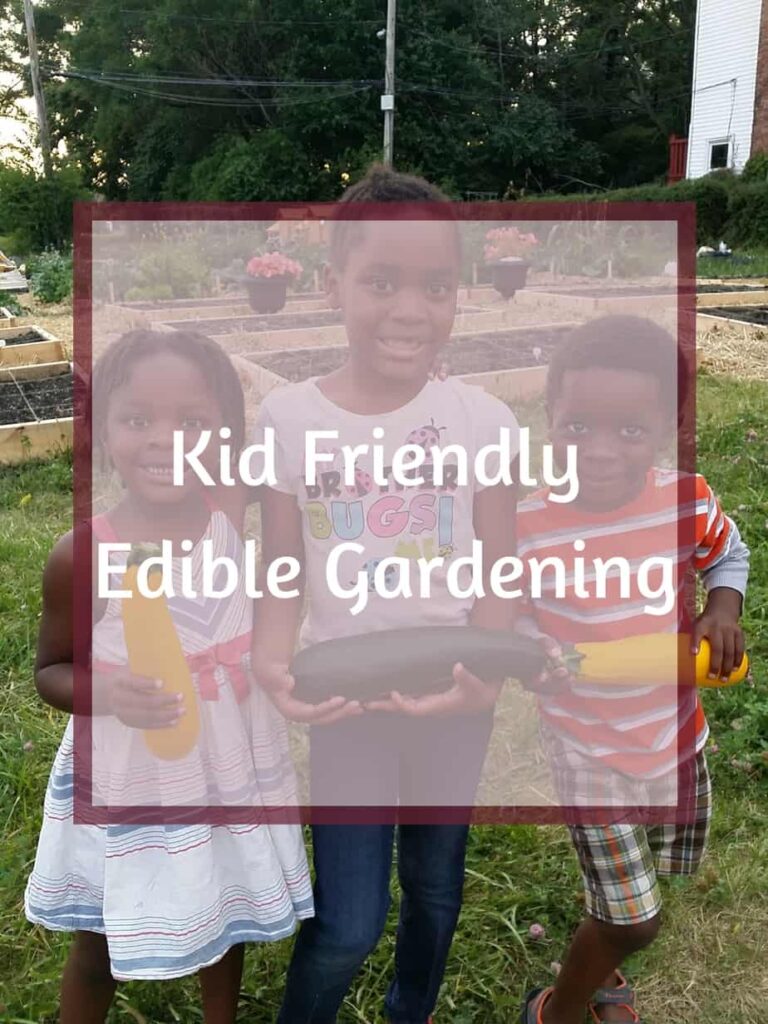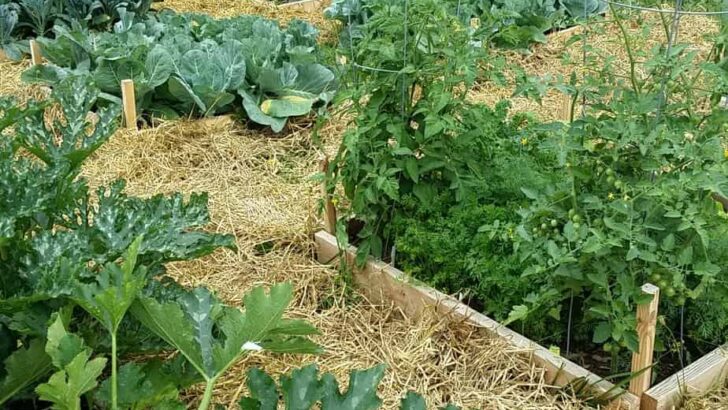Gardening is a wonderful tool to teach children many concepts while enjoying the outdoors and time together. It’s also been proven that children who experience hands-on gardening naturally will eat more fruits and veggies even if not grown in their garden, and that’s always a plus! Getting started doesn’t cost much and who doesn’t love some homegrown produce or flowers?
Tips For Gardening With Kids
Easy Tips for Gardening With Kids
Keep it simple. Don’t set up six garden beds and buy seven verities of peas and spend tons on ‘miracle’ fertilizers. Keep it simple and easy. A single six by three foot garden bed can house a plethora of food producing plants. You don’t want to overwhelm yourself or your child with too much to handle.
I know that since we run an urban farm, this tip seems counterproductive, but remember that we do have a bed that is dedicated to just the children in the neighborhood and teaching them how the process of growing food begins.

One unique idea to make easy garden beds for almost free is to use old tires. Although making a garden bed can be a fun learning project in itself. Dirt can usually be found for free or compost for very cheap from your local waste center.
Choose what you grow according to your child’s abilities. For younger children growing plants that are easy to start from seed right in the dirt is best. Older children might enjoy starting seedlings and caring for them before moving them into the garden.
Composting can also be an excellent learning experience. Using fruit and veggie scraps, cardboard and lawn clippings in a small compost pile, and watering plants with compost tea shows children how to provide natural fertilizer to plants and can increase growth and yield.
Try out something new. This somewhat contradicts the keep it simple statement, but trying out something new and unique can be fun! Growing rainbow chard and purple beans can be exciting and brighten up the garden. Select plants that you and your family will eat and check out what varieties are available and do well in your zone.

Use every instance as a teaching moment. From responsibility and teamwork to science and nutrition gardening provides teaching moments at every step along the way. Encourage your child to ask questions and experiment with outcomes when possible. (Easy experiments can be using compost versus not, sun versus shade, starting seeds versus direct sowing, etc.)
As always, you can always join the We Sow We Grow Gardening Group to learn more about gardening with your children. We'd love to have you!


